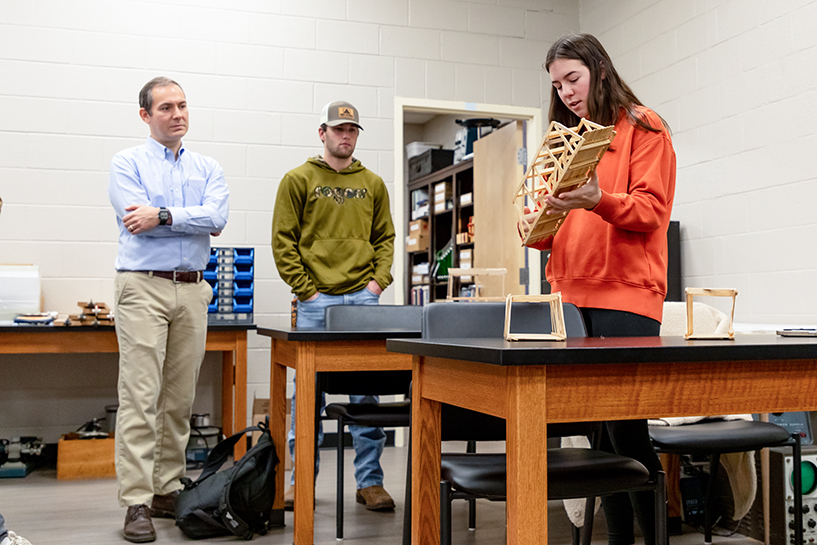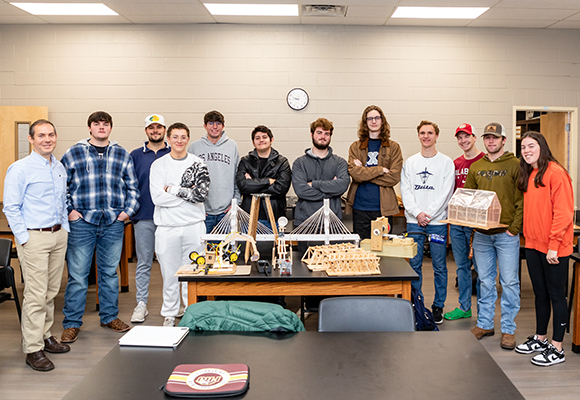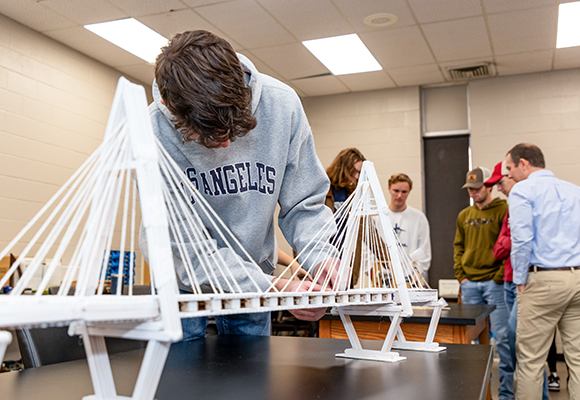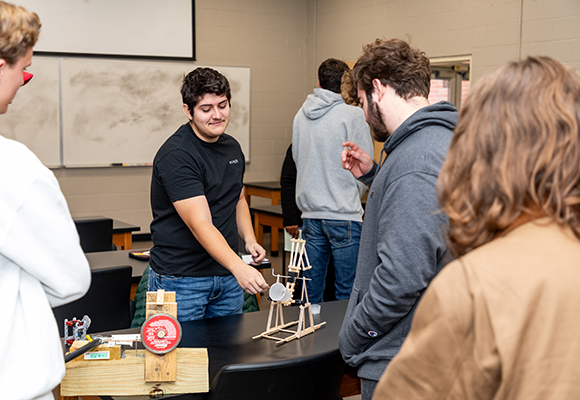
December 2024
Building a Future: Pre-Engineering Class Sparks Creativity and Problem-Solving at FHU
For the 11 students enrolled in Freed-Hardeman University’s Intro to Engineering course, the fall semester was more than just a series of lessons—it was a hands-on journey into the world of design, innovation and problem-solving. Guided by Dr. Ben Clark, who is the director of computer science and digital innovation, students were given the opportunity to create unique projects that challenged them to think critically and embrace the engineering process from start to finish. The goal wasn’t just about building something impressive; it was about learning how to tackle real-world challenges, refining ideas and finding where their passions could take them.
The class is taken by pre-engineering, engineering and computer engineering majors. The course
culminated in a showcase of diverse projects, each reflecting the students’ creativity and determination. Joshua Mashburn constructed a motorized vehicle, while Brock Windham ambitiously built a model suspension bridge inspired by Sydney’s Anzac Bridge. Windham’s project involved over 1,000 popsicle sticks and countless hours over Thanksgiving break. “It was a challenge, but I enjoyed figuring out how everything fit together,” said Windham, who is studying Bible, engineering and business.

FHU Professor Ben Clark (l) stands with the students in his Intro to Engineering Projects class
For Jenna Satterly, the experience was particularly rewarding as it allowed her to explore her interest in civil engineering. She built three different truss bridges using popsicle sticks and reflected on the process. “It was fun to build all of them, but the biggest lesson I learned was not to procrastinate,” she said. Satterly, who dreams of designing roads and bridges, sees this project as a meaningful step toward her future career.
Other students also took on ambitious projects, including Nolan Bates, who explored the mechanics of gears, and Drew Blankenship, who created a weapon launcher. Nash Roberson designed cleat attachments using 3D modeling software, describing the project as “more difficult than [he] thought it would be.” Case Maxwell designed a model greenhouse and was surprised to discover that it could actually retain some heat, a revelation that added to his sense of accomplishment.

FHU student Brock Windham built a model of the Anzac bridge in Sydney, Australia

FHU student demos a catapult
Throughout the semester, Clark encouraged the students to take full ownership of their learning experience by documenting their progress and even proposing their own grades. He emphasized that the primary objective was to expose them to engineering ideas and help them discover where their interests could serve others.
“I wanted them to experience every stage of the design process—from identifying the problem to brainstorming and testing solutions,” Clark explained. During the semester, students also had the chance to apply their skills during Servant’s Day, contributing to community service projects using their newfound engineering knowledge. “It gave them real-world experience and a sense of how their skills can benefit others,” he added.
For many students, some of their biggest takeaways were perseverance, critical thinking and creativity. “Whether they become engineers or not, I want them to leave this class knowing how to approach challenges with confidence and creativity,” Clark said. Judging by the innovative projects and valuable lessons learned, the students are well on their way to building not just structures but also a foundation for future success.